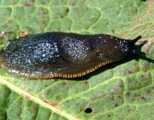Gardener's diary tips
What to do this week in the garden early October


Organic garlic
Garlic needs a longer growing season than most alliums, so if you plant now, you should get good-sized bulbs next year. We’ve found that Thermidrome (from The Organic Gardening Catalogue) is the most reliable in our conditions, but there are plenty of others that are worth trying. Ground should be free-draining and well prepared so that the single cloves can be easily pushed into the soil; they will then put out a sturdy root system. Thermi-drome roots early and shoots late; other varieties root and shoot at the same time. If conditions aren’t suitable in October, you could plant the separate cloves in a 9cm pot filled with good soil-based potting compost, and plant them out when conditions are right.
Vegetables in the ground You don’t have to harvest all your vegetables immediately as quite a few can be left in the ground. Once you lift a vegetable, it will start to lose moisture and wither if it’s not stored in a damp medium. Leeks are best lifted as and when you need them; parsnips are hardy and can also be left in the ground. Leave your carrots, too, preferably covered with fleece, but watch out for slug damage. As our winters get milder, we leave our beetroot and celeriac in the ground, but the classic storage method is to remove excess soil and foliage and then layer them in a wooden box in a moist medium, such as peat, coir or sand, and store in a shed or garage.
Slugs and potatoes
Our first year of experiment-ing with organic slug pellets (Advanced Slug Killer, by Growing Success, available online and at garden centres) is proving successful. My favourite potato variety, Heather, is very susceptible to slugs, so we tried out putting a few pellets around the seed potatoes when we set them; when it came to harvest, we found that only about 10% were damaged a very great improvement on past years when as much as 90% had been damaged by the mall, black keeled slug. All our other varieties, not treated with slug pellets, have experienced higher-than-normal slug damage this year.
Prune evergreens
Evergreen shrubs that are starting to get a bit unruly can be controlled by giving them a light prune, but do it now so that you give the newly exposed leaves a chance to toughen up before the frosts of late autumn and winter. If you’re unable to prune now, then it’s better to leave it until the early spring.
Exquisite houses, the beauty of Nature, and how to get the most from your life, straight to your inbox.
Hedgehogs
The hedgehog is a valuable friend to your garden, so please think about him if you begin to tidy up, especially when giving your shrubs a heavy prune or even removing them. He loves to hibernate in heaped leaves under dense shrubbery, so perhaps you could put down a hedgehog house, covered with leaves, under another shrub if you’re working somewhere you know that he usually sleeps through the winter. After all, an organic garden relies on such predators to control a lot of the pests.
Philip Maddison is head gardener at Harrington Hall, Lincolnshire (www.harringtonhallgardens.co.uk)
Country Life is unlike any other magazine: the only glossy weekly on the newsstand and the only magazine that has been guest-edited by His Majesty The King not once, but twice. It is a celebration of modern rural life and all its diverse joys and pleasures — that was first published in Queen Victoria's Diamond Jubilee year. Our eclectic mixture of witty and informative content — from the most up-to-date property news and commentary and a coveted glimpse inside some of the UK's best houses and gardens, to gardening, the arts and interior design, written by experts in their field — still cannot be found in print or online, anywhere else.
